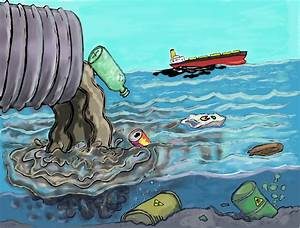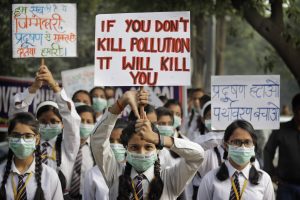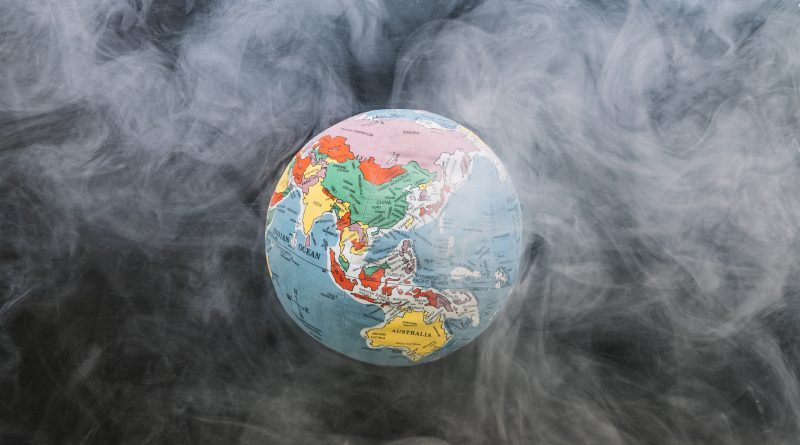The Killing Fumes
The Killing Fumes
Indoor and outdoor air pollution that has emerged as a major threat to the quality of life and health the world over, has acquired menacing proportions in India…
Dr Suneela Garg/Dr Samar Hossain


The World Health Organization (WHO) has highlighted that air pollution is mainly responsible for non-communicable diseases (NCDs) causing an estimated 24% of all adult deaths from heart disease, 25% from stroke, 43% from COPD and 29% from lung cancer. Mumbai was ranked as the 4th most polluted megacity in the World, also being ranked the 63rd most polluted city among 859 cities considered by WHO around the world.
 A majority i.e. 91% of the world’s population lives in places where air quality exceeds WHO guideline limits. India is home to 22 of the World’s 50 most polluted cities. Children suffer the most. Almost 44% of school children in Delhi have reduced lung function as compared to 25.7%. Pollution is responsible for premature deaths. In India, around 6, 27,000 deaths are caused by outdoor pollutants every year. Over a 730 day period between 2012 and 2013 Delhi’s air standards were “healthy” only for 8 days. Ozone at the ground level is a major contributor of smog. Household air pollution is an even worse public health emergency associated with over 1 million deaths a year.
A majority i.e. 91% of the world’s population lives in places where air quality exceeds WHO guideline limits. India is home to 22 of the World’s 50 most polluted cities. Children suffer the most. Almost 44% of school children in Delhi have reduced lung function as compared to 25.7%. Pollution is responsible for premature deaths. In India, around 6, 27,000 deaths are caused by outdoor pollutants every year. Over a 730 day period between 2012 and 2013 Delhi’s air standards were “healthy” only for 8 days. Ozone at the ground level is a major contributor of smog. Household air pollution is an even worse public health emergency associated with over 1 million deaths a year.
Air pollution in India is caused by fuel wood and biomass burning, burning of crop residue in agriculture fields on a large scale, use of adulterated fuel, emission from vehicles and traffic congestion. The open burning of waste is a large source of toxic air pollutants such as particulates, carbon monoxide, black carbon, dioxins, furans, and mercury.
Air pollution is a major risk factor for heart disease, stroke, chronic obstructive pulmonary disease (umbrella term for several progressive lung diseases including emphysema) and lung cancer. It increases the risks for acute respiratory infections and exacerbates asthma.
India is the third largest in the emission of greenhouse gases after China and the United States. The severity of air pollution is so much that life expectancy among Indians on an average reduces by 3.4 years while among the residents of Delhi it reduces by almost 6.3 years.
It has been found that, around the world, more deaths occur due to poor air quality than water. The WHO issues guidelines to measure air pollution in a region according to which it has fixed the limit of particulate matters in the air.
Indian air quality standard limits the safe exposure to PM2.5 up to 40 μg/m3 and a recent study reveals that 50% population living in 45% districts of India is exposed at PM2.5 concentration beyond 40 μg/m3.The WHO considers air unsafe when average exposure to any of these matters exceeds the limit. According to the 2016 Environmental Performance Index (EPI) more than 3.5 billion people – half of the world’s population – are exposed to unsafe air quality which also includes 75% of India’s population. Indoor air pollution is among the top five environmental health risks.
 According to various studies, household air pollution causes more deaths than outdoor with researchers even emphasizing that 40% of all the diseases burden can be attributed to household air pollution. In 2012, indoor air pollution was linked to 4.3 million deaths globally, compared with 3.7 million for outdoor air pollution.
According to various studies, household air pollution causes more deaths than outdoor with researchers even emphasizing that 40% of all the diseases burden can be attributed to household air pollution. In 2012, indoor air pollution was linked to 4.3 million deaths globally, compared with 3.7 million for outdoor air pollution.
In another survey done the same year, it was found that indoor and outdoor air pollution claimed at least 40,000 UK lives a year with a total damaging cost of £20bn. In India, too, deaths due to indoor air pollution amount to 300,000 to 400,000. A survey found that 76% of the offices and houses in National Capital Region have unhealthy air quality and 34% of people staying indoors have respiratory problems.
Solid fuels are the biggest contributor to the deterioration of household air quality. It is estimated that 25%-30% of primary particle pollution in India is from household fuels.
Over one billion children live in homes where solid fuels are used in cooking and heating and in India, about 64%of the population use solid fuels with high PM2.5 production.
Surveys suggest over 100 million households in India use such stoves (chullahs) every day, 2–3 times a day. Clean burning fuels and electricity are unavailable in rural parts and small towns of India because of poor rural highways and limited energy generation infrastructure.
Fuel wood and biomass burning is the primary reason for near-permanent haze and smoke observed above rural and urban India, and in satellite pictures of the country. Fuel wood and biomass cakes are used for cooking and general heating needs. These are burnt in cook stoves known as chullahs in some parts of India. These cook stoves are present in over 100 million Indian households, and are used two to three times a day, daily.
Some reports, including one by the WHO, claim 300,000 to 400,000 people die of indoor air pollution and carbon monoxide poisoning in India because of biomass burning and use of chullahs. The air pollution is also the main cause of the Asian brown cloud which delays the start of the monsoon. Burning of biomass and firewood will not stop unless electricity or clean burning fuel and combustion technologies become reliably available and widely adopted in rural and urban India.
India is the world’s largest consumer of fuelwood, agricultural waste and biomass for energy purposes. From the most recent available nationwide study, India used 148.7 million tonnes coal replacement worth of fuel-wood and biomass annually for domestic energy use. India’s national average annual per capita consumption of fuel wood, agricultural waste and biomass cakes was 206 kilogram coal equivalent. The overall contribution of fuel wood, including sawdust and wood waste, was about 46% of the total, the rest being agriculture waste and biomass dung cakes. Traditional fuel (fuel wood, crop residue and dung cake) dominates domestic energy use in rural India and accounts for about 90% of the total. In urban areas, this traditional fuel constitutes about 24% of the total. India burns tenfold more fuel wood every year than the United States; the fuel wood quality in India is different from the dry firewood of the United States; and, the Indian stoves in use are less efficient, thereby producing more smoke and air pollutants per kilogram equivalent.
Adulteration of gasoline and diesel with lower-priced fuels is common. Some adulterants increase emissions of harmful pollutants from vehicles, worsening urban air pollution. Financial incentives arising from differential taxes are generally the primary cause of fuel adulteration. In India and other developing countries, gasoline carries a much higher tax than diesel, which in turn is taxed more than kerosene meant as a cooking fuel, while some solvents and lubricants carry little or no tax.
As fuel prices rise, the public transport drivers cut costs by blending the cheaper hydrocarbon into highly taxed hydrocarbon. The blending may be as much as 20–30 percent. For a low wage driver, the adulteration can yield short term savings that are significant over the month. The consequences to long term air pollution, quality of life and effect on health are simply ignored. Also ignored are the reduced life of vehicle engine and higher maintenance costs, particularly if the taxi, auto-rickshaw or truck is being rented for a daily fee.
Fuel adulteration is essentially an unintended consequence of tax policies and the attempt to control fuel prices, in the name of fairness. Air pollution is the ultimate result. This problem is not unique to India, but prevalent in many developing countries including those outside of south Asia. This problem is largely absent in economies that do not regulate the ability of fuel producers to innovate or price based on market demand.
 Traffic congestion is severe in India’s cities and towns. Traffic congestion is caused by several factors, some of which are: increase in number of vehicles per kilometre of available road, a lack of intra-city divided-lane highways and intra-city expressways networks, lack of inter-city expressways, traffic accidents and chaos due to poor enforcement of traffic laws. General lack of traffic sense in the public is the main reason for the chaos on the roads.
Traffic congestion is severe in India’s cities and towns. Traffic congestion is caused by several factors, some of which are: increase in number of vehicles per kilometre of available road, a lack of intra-city divided-lane highways and intra-city expressways networks, lack of inter-city expressways, traffic accidents and chaos due to poor enforcement of traffic laws. General lack of traffic sense in the public is the main reason for the chaos on the roads.
Traffic congestion reduces average traffic speed. At low speeds, scientific studies reveal, vehicles burn fuel inefficiently and pollute more per trip. For example, a study in the United States found that for the same trip, cars consumed more fuel and polluted more if the traffic was congested, than when traffic flowed freely.
Traffic gridlock in Delhi and other Indian cities is extreme. The average trip speed on many Indian city roads is less than 20 kilometres per hour; a 10 kilometre trip can take 30 minutes, or more. At such speeds, vehicles emit air pollutants 4 to 8 times more than they would with less traffic congestion; Indian vehicles also consume a lot more carbon footprint fuel per trip, than they would if the traffic congestion was less. Emissions of particles and heavy metals increase over time because the growth of the fleet and mileage outpaces the efforts to curb emissions.
(The authors are Director Professor HAG/ Senior Resident, Department of Community Medicine, Maulana Azad Medical College, New Delhi)

